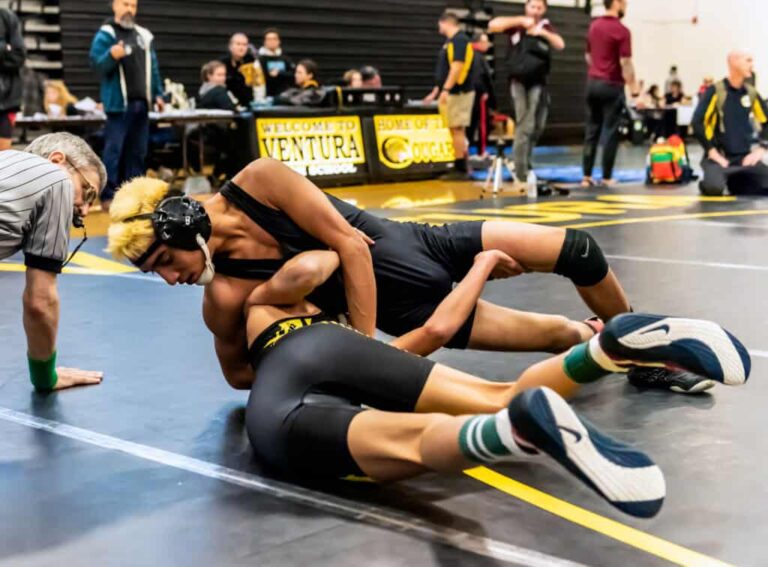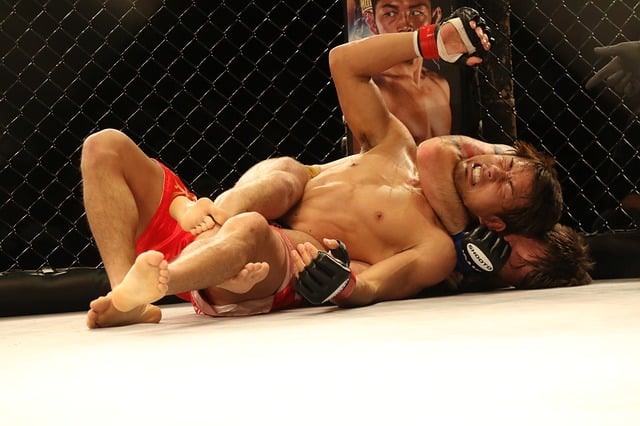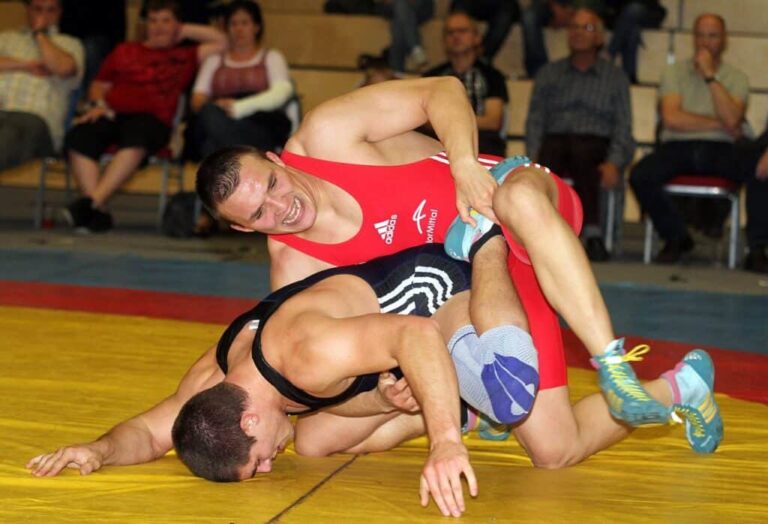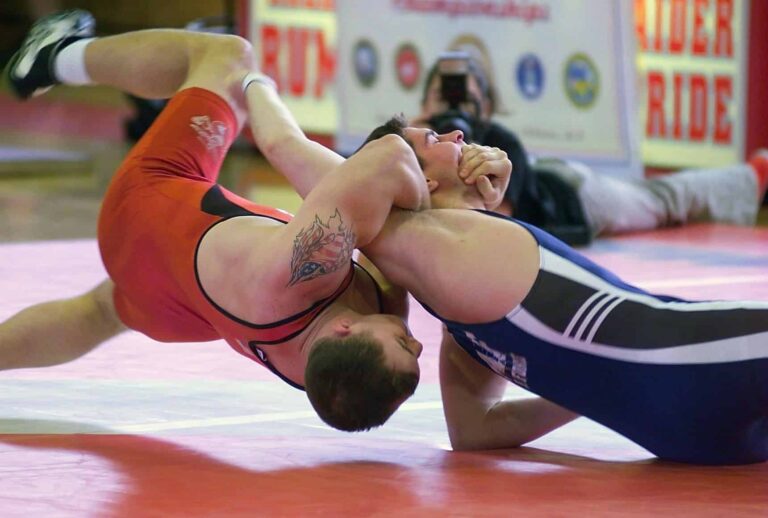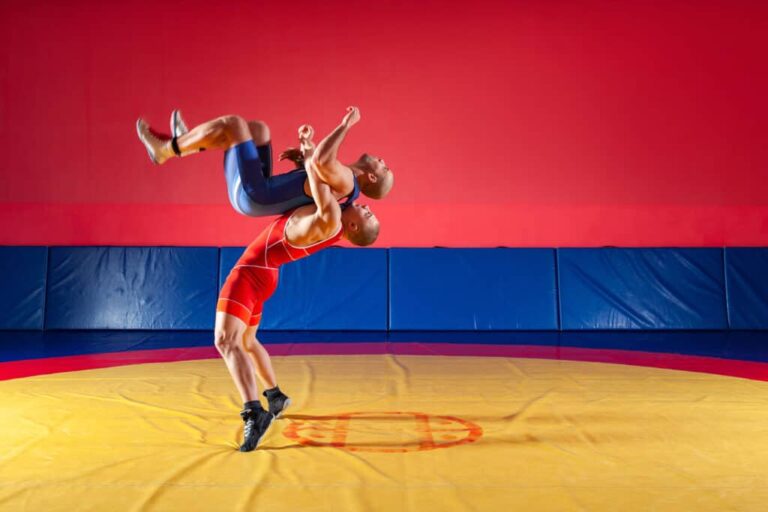Freestyle Wrestling Weight Classes | A Complete List

Understanding how weight classes work in freestyle wrestling can be tricky, especially since the weight categories in Olympic competitions are different from those used in non-Olympic tournaments. Men and women also have different weight classes, and a competitor’s age may determine their weight class depending on the type of competition.
Freestyle wrestling weight classes only vary by competitor’s age in non-Olympic freestyle wrestling. There are six age categories for both men and women, each with ten weight classes. On the other hand, Olympic competitions have six weight classes for both genders.
Freestyle wrestling is one of two main branches of internationally recognized amateur competition wrestling styles一the other one is Greco-Roman. Both styles are regulated by the United World Wrestling (UWW) and share some basic techniques.
Read on to learn about the different weight classes in both Olympic and non-Olympic freestyle wrestling, the role your age plays in determining your weight class, and so much more.
Olympic and International Freestyle Wrestling Weight Classes
Freestyle wrestling weight classes vary in terms of age, sex, and the type of competition in question.
To simplify things, let’s first tackle the different age categories for this wrestling style and discuss the different weight categories for both men and women in Olympic and non-Olympic competitions.
Age Categories for Freestyle Wrestling
Female freestyle wrestlers have six age categories. Since you need to know these categories to determine your weight class, let’s quickly review them.
Listed from the youngest oldest, these age categories as follows:
- Under-15s. This category includes 14 to15 year-olds. However, 13-year-olds may qualify as long as they have a medical certificate and their parent’s consent.
- Cadets. This group refers to 16 to 17-year-olds. 15-year-olds may compete in this age bracket provided they have their parent’s authorization and a medical certificate.
- Juniors. Junior freestyle wrestlers are 18 to 20 years old. 17-year olds may qualify if they have parental approval and a medical certificate.
- Seniors U23. This group comprises 19 to 23-year-olds and 18-year-olds with documented parental authorization and a medical certificate.
- Seniors. Seniors are competitors aged 20 years and above.
- Veterans. Any freestyle wrestler aged 35 and above.
Competitors’ ages are verified at all competitions and championships during the accreditation process. Upon verification, each participant is issued an honor certificate to show that the right age is captured.
All this is to say one thing: you can’t lie about your age to qualify for a particular weight class.
Freestyle Wrestling Weight Classes for Women
In non-Olympic women’s wrestling, five age categories have ten weight classes. However, there are variations in the specific weight categories, as shown below:
Seniors, Seniors U23, and Juniors
- 50 kg (110 lbs)
- 53 kg (117 lbs)
- 55 kg (121 lbs)
- 57 kg (126 lbs)
- 59 kg (130 lbs)
- 62 kg (137 lbs)
- 65 kg (143 lbs)
- 68 kg (150 lbs)
- 72 kg (159 lbs)
- 76 kg (168 lbs)
Under-15s
- 29 to 33 kg (64 to 73 lbs)
- 36 kg (79 lbs)
- 39 kg (86 lbs)
- 42 kg (93 lbs)
- 46 kg (101 lbs)
- 50 kg (110 lbs)
- 54 kg (119 lbs)
- 58 kg (128 lbs)
- 62 kg (137 lbs)
- 66 kg (146 lbs)
Cadets
- 36 to 40 kg (79 to 88 lbs)
- 43 kg (95 lbs)
- 46 kg (101 lbs)
- 49 kg (108 lbs)
- 53 kg (117 lbs)
- 57 kg (126 lbs)
- 61 kg (134 lbs)
- 65 kg (143 lbs)
- 69 kg (152 lbs)
- 73 kg (161 lbs)
In Olympic competitions, weight classes aren’t organized by age. Instead, there are six universal weight categories for women’s wrestling as outlined below:
- 50 kg (110 lbs)
- 53 kg (117 lbs)
- 57 kg (126 lbs)
- 62 kg (137 lbs)
- 68 kg (150 lbs)
- 76 kg (168 lbs)
Freestyle Wrestling Weight Classes for Men
Men have three weight categories. Juniors, seniors, and U23s share a single system of weight classes in international competitions. Meanwhile, U15s and cadets have their own weight classes. The only thing that’s similar across all age categories is that there are ten weight classes.
Here are the various weight classes for each age category in non-Olympic freestyle wrestling:
Juniors, U23s, and Seniors
- 57 kg (126 lbs)
- 61 kg (134 lbs)
- 65 kg (143 lbs)
- 70 kg (154 lbs)
- 74 kg (163 lbs)
- 79 kg (174 lbs)
- 86 kg (190 lbs)
- 92 kg (203 lbs)
- 97 kg (214 lbs)
- 125 kg (276 lbs)
U15s
- 34 to 38 kg (75 to 84 lbs)
- 41 kg (90 lbs)
- 44 kg (97 lbs)
- 48 kg (106 lbs)
- 52 kg (115 lbs)
- 57 kg (126 lbs)
- 62 kg (137 lbs)
- 68 kg (150 lbs
- 75 kg (165 lbs)
- 85 kg (187 lbs)
Cadets
- 41 to 45 kg (90 to 99 lbs)
- 48 kg (106 lbs)
- 51 kg (112 lbs)
- 55 kg (121 lbs)
- 60 kg (132 lbs)
- 65 kg (143 lbs)
- 71 kg (157 lbs)
- 80 kg (176 lbs)
- 92 kg (203 lbs)
- 110 kg (243 lbs)
As is the case with women’s Olympic competitions, age categories don’t apply to men’s freestyle wrestling in Olympic competitions. Instead, there are six weight classes. These are as follows:
- 57 kg (126 lbs)
- 65 kg (143 lbs)
- 74 kg (163 lbs)
- 86 kg (190 lbs)
- 97 kg (214 lbs)
- 125 kg (276 lbs)
Note: If you’ve been following closely, you’ve probably noticed that there are no separate weight classes for veterans. That’s because veterans may use seniors’ weight classes in international competitions.
Other Important Facts About Freestyle Wrestling Weight Classes
Now, let’s further expand your knowledge on the subject by covering two critical things you need to know about weight classes in freestyle wrestling.
The first thing is how weigh-ins work because this can make quite a difference.
There are two weigh-ins conducted in two subsequent days. If you fail the first weigh-in but come very close to making the required weight (according to your weight class), you have about a day to do whatever you can to make the required weight in the second round of weigh-in.
However, failing to make the required weight in the second weigh-in can mean disqualification because there’s zero weight tolerance in this round. The exception to this rule is when you’re weighing in for International Tournaments (except for UWW ranking events) and the World Cup.
The other rule you need to be aware of is that you’re only allowed to compete in a single weight class, the one matching your body weight at the time of the final weigh-in. However, there’s an exception to this rule.
Senior competitors may choose to compete in the next higher weight class except when the next-level weight class is the heavyweight category. All male heavyweights must weigh over 97 kg (214 lbs). Female wrestlers must be at least 72 kg (159 lbs) to compete as heavyweights.
